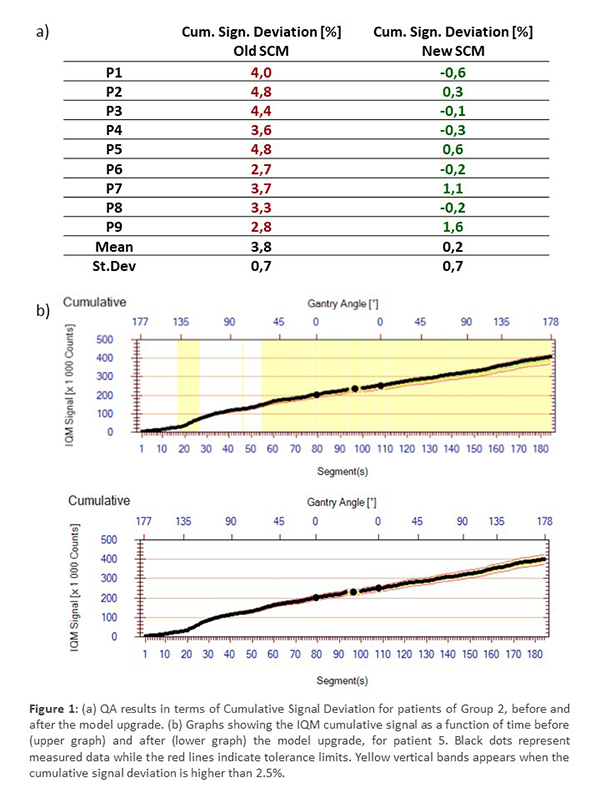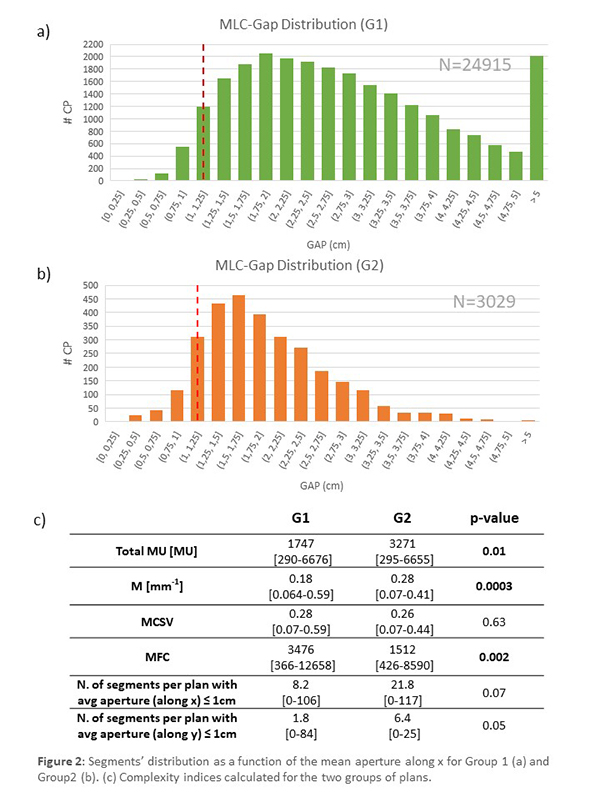PSQA with IQM detector for high modulated fields: impact of a better small segments modelling
PO-1720
Abstract
PSQA with IQM detector for high modulated fields: impact of a better small segments modelling
Authors: Margherita Zani1, Silvia Calusi2, Tommaso Zoppi3, Livia Marrazzo2,1, Chiara Arilli1, Marta Casati1, Antonella Compagnucci1, Cinzia Talamonti1,2, Stefania Pallotta2,1
1Azienda Ospedaliero Universitaria Careggi, Medical Physics Unit, Florence, Italy; 2University of Florence, Experimental and Clinical Biomedical Sciences “Mario Serio”, Florence, Italy; 3University of Florence, Mathematics and Computer Science “Ulisse Dini”, Florence, Italy
Show Affiliations
Hide Affiliations
Purpose or Objective
This work aims to test the Integral Quality Monitor (IQM) detector as a tool for patient-specific QA (PSQA) after an upgrade of the Signal Calculation Model (SCM). This upgrade aimed to increase the system reliability for plans with segments characterized by a small aperture (average x/y dimension of 1cm or lower). The performances of the new IQM SCM were assessed by comparing the QA results of a set of VMAT plans acquired before and after the model upgrade. Correlation between QA results and plan complexity was also investigated.
Material and Methods
The IQM system consists of a large transmission IC, mounted on the LINAC collimator face and of a software designed and commissioned to predict the detector output [1]. PSQA is carried out by comparing measured and predicted IQM signal output.
The new IQM SCM, generated after additional small fields measurement, was tested with a three-step process:
1. 84 VMAT plans planned with Monaco® TPS and delivered with an Elekta VersaHD™ LINAC were tested with the original IQM SCM. Plans with a cumulative signal deviation (CSD) ≤2.5% (G1) were separated from those showing a CSD>2.5% (G2). The threshold value of 2.5% was suggested by the vendor after the acceptance test.
2. G2 plans QA was performed for a second time using the new SCM.
3. For each plan, the total MUs, the index of modulation (M), the modulation complexity score (MCSv), the mean-field area index (MFC) [2], and the number of segments per plan with an average aperture ≤1 cm along both x and y directions, were calculated by using the open-source framework MACARON[3].
[1] M. Pasler et al 2017 Phys. Med. Biol. 62 7440
[2] M. Antoine et al 2019 EJMP 64:98-108
[3] NextGenerationEU programme, Italian DM737 – CUP B15F21005410003, MACARON project https://github.com/tommyippoz/MACARON
Results
Step1: Of the 84 VMAT plans, 75 (G1) had a CSV<2.5% (CSD= 0.1%±1.0%), while 9 plans (G2) had a CSD above the threshold (CSD =3.8%±0.7%).
Step2: With the new SCM, G2 QA results registered a significant improvement, as shown in Fig.1.
Step3: Fig.2 (a,b) shows the distribution of segments with a small average aperture, along x. The two groups' results were statistically different (t-test, p<0.01). On the MLC travel direction (x), the percentage of segments with an average aperture ≤1 cm was 2.9% (G1) vs 6.2% (G2), while on jaws direction (y), the percentages for G1 and G2 were 0.6% and 2.9% respectively. In fig.2(c) the plan complexity analysis is shown. The two groups’ results were statistically different in terms of total MUs, M and MFC, indices that are both higher for plans composed by a high number of segments with a small area.


Conclusion
IQM is a reliable tool for PSQA. With the new updated version, that was introduced and tested in our clinic before making it available on the market, a marked improvement in the performances was achieved for plans containing large number of segments with a small area. Complexity analysis proved to be a useful tool for evaluating the behavior of the calculation model.